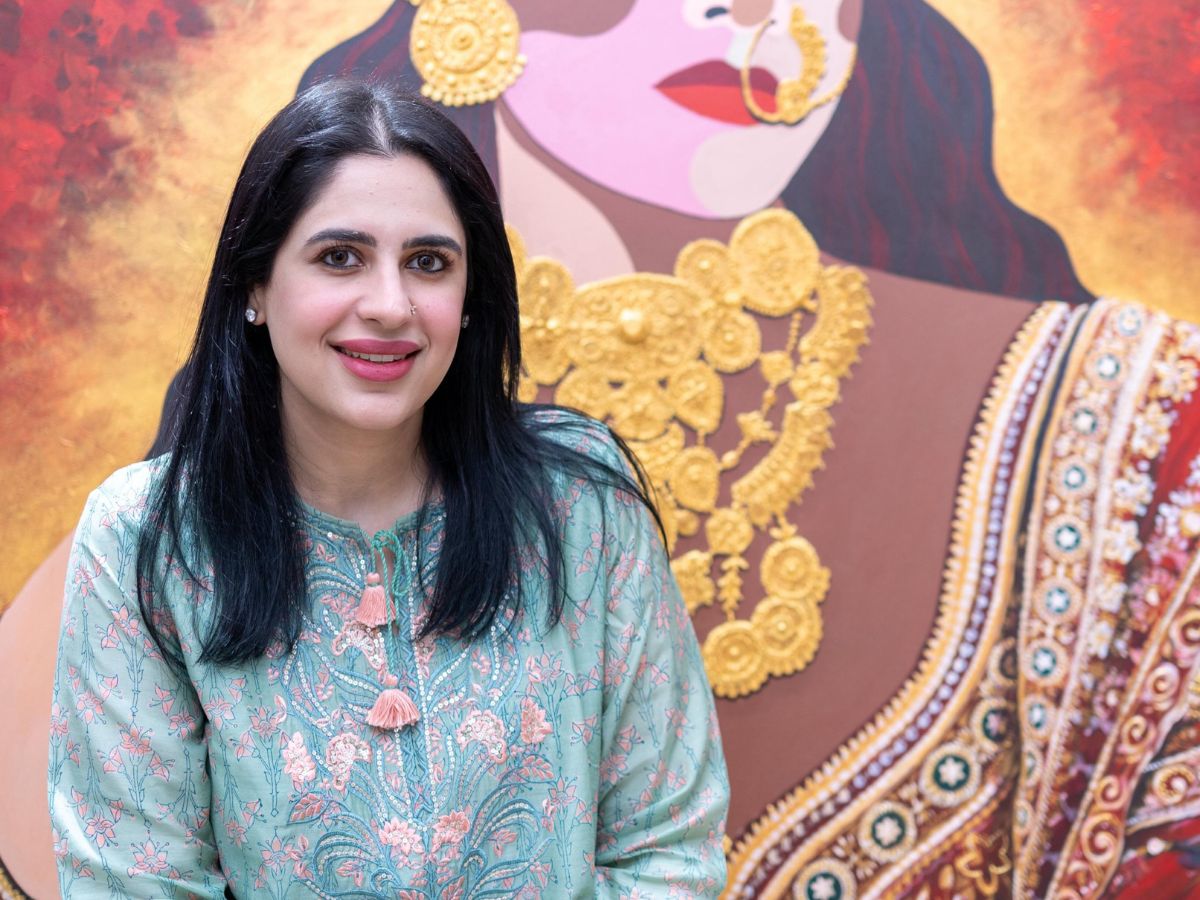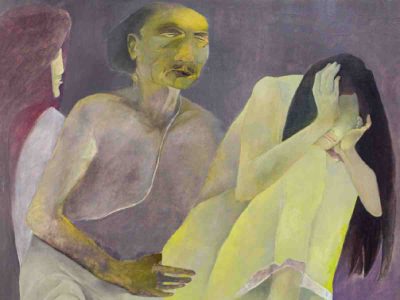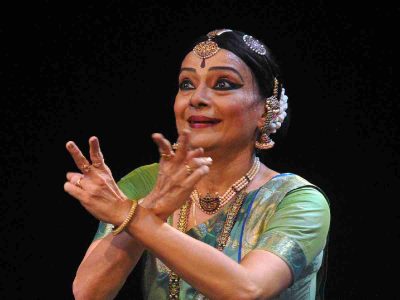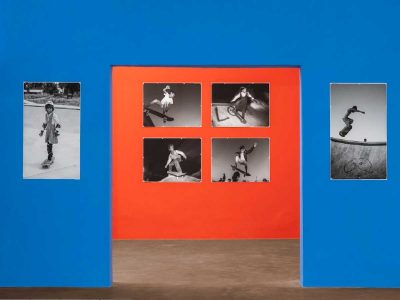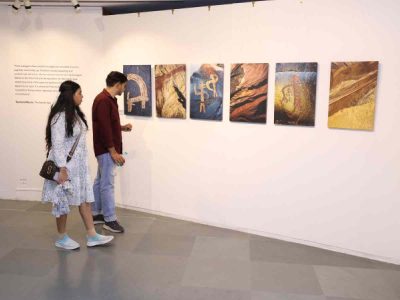Artist Pavani Nagpal presents Brahmacharini, one of the nine incarnations of Mahadevi, in pure white, and wearing silver, ocean-blue jewellery and dark red lipstick.
Lotuses bloom in Brahmacharini’s background, and her face is painted with different shades of beige.
“Whenever I imagine a goddess, gehna (jewellery) is something that I always think of. It is something that is associated with all the goddesses. When I created this painting, I wanted to keep this in a Brahmacharini as well, but not in the way that it looks like luxury,” says Pavani.
The Brahmacharini painting reflects the charm of the material world, and also explores the depth of a woman’s consciousness, her devotion, reminding the viewer that “true fulfillment” lies beyond the tangible world.
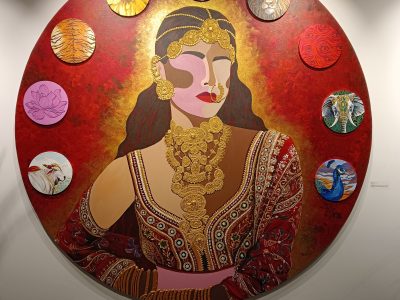
In all her paintings of nine incarnations of Mahadevi, she creates images that a woman today can relate to. On a circular canvas, she uses different mediums and bright colours — often erasing the line between traditional and popular.
“I love using vibrant colours. I can never forget Tanjore paintings for its heavy use of gold. Similarly, I love to use gold, bright colours because we, as Indians, are very colourful and diverse people,” says the Delhi-based artist.
“My art reflects that vibrant culture and brightens up your mood and life.”
Pavani calls herself “feminist by heart”. Her paintings explore different shades of womanhood, often challenging the stereotypes associated with it. Most of her paintings depict figurative abstracts of modern women — or even goddesses presented as modern, but reflecting their traditional values — poised to break free from the constraints of patriarchy.
She works across various mediums, including charcoal, ink, acrylic, and the fascinating realm of fluid art.
She not only creates visually striking pieces but also communicates a powerful message of resilience and empowerment, inviting viewers to reflect on the evolving narratives of gender and societal norms. This, she says, springs from her own experiences as a woman.
“I am a 6 feet tall woman. For an Indian girl that tall, I have been made fun of. In school, I was asked to stand last in a queue. Everywhere I used to visit, people would look at me from up till down. So, in Indian society, the women are made conscious of how they look,” she says.
For the sculpture called Melanin, Nagpal presents a dark-skinned woman accepting her complexion, and in the painting of Kaalratri – Melanin Majesty, she depicts goddess Durga in golden jewellery and bright red hands. A third eye is visible on her forehead.
“We worship Kaali Maa. She is the fiercest goddess and protects us from all sorts of evil. So if we worship a goddess who is dark in colour, why do we have to ask dark-skinned Indian women to apply fairness cream?” she asks.
The stereotypes of society motivate her to depict women accepting their flaws.
“For me, I am flawless. This is not my overconfidence… If you start to own your flaws, it becomes a positive aspect of your personality,” she says.
She depicts Firdaus, who is represented as a queen wearing a Pashmina shawl, with two horns protruding through her forehead, representing her flaws.
“This is a very conscious choice. She is a queen, but she has flaws and accepts them,” says Pavani.

Pavani started her artistic journey at the age of six, when she took an art class from a local teacher and fell in love with colours and paints. She chose Fine Arts at DPS Vasant Kunj for her school education. Following this, she pursued a Diploma in Painting at LaSalle College of Arts, Singapore, and then completed her BFA in Painting at Amity University, Noida.
In her first solo exhibition recently held in Delhi’s Rang Mirage Art Gallery, there were tears in her eyes. The exhibition, titled She/Her, presented her work on the nine incarnations of Mahadevi, besides other works including her three large sculptures, her paintings on solaha suhag and body positivity.
“She or her in the exhibition represents every woman who has gone through life and emerged strong. My exhibition is dedicated to all of them,” Pavani says about the exhibition.
“I have tried to paint every emotion of mine on the canvas.”
For instance, her work on body positivity comes from her personal experiences. In the painting titled Sugar Glazed, she presents a woman accepting her body fat and wearing a short costume. A donut represents her willingness to celebrate who she is.
“I made this painting in college based on my own experience of growing up. The woman in Sugar Glazed is not beautiful by social standards, but she is beautiful to me. People may say good things about her on the face, but they will always speak ill of her behind her back. I want all such women to feel empowered,” she says.
One of the unique features of her painting is to never draw facial features of her subjects, especially eyes. She believes it’s more important to highlight the story, emotion and depth than to paint the obvious facial features.
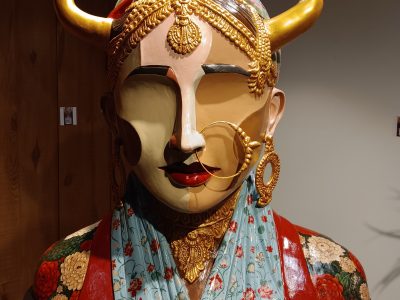
“None of my artwork needs eyes. They tell the story of every subject without eyes,” says Pavani.
“If you talk to someone, you look into their eyes. So, I don’t want to make something as obvious as the eyes, so you look at the eyes to understand the painting.”

